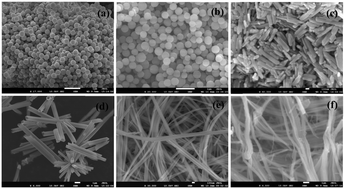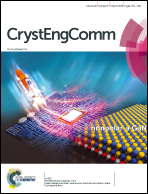Controlled synthesis of t-Se nanomaterials with various morphologies via a precursor conversion method
Abstract
Trigonal selenium (t-Se) nanomaterials with different morphologies present distinct properties and great potential applications in electric devices. However, controlled synthesis of t-Se nanomaterials with various morphologies is difficult in a typical preparation process. Therefore, it is imperative to develop an easily controlled and high-efficiency method to prepare t-Se with various morphologies. Herein, a precursor conversion method was proposed to prepare t-Se nanomaterials with different morphologies. That is, uniform amorphous selenium (a-Se) nanospheres were prepared by reducing sodium selenite with glucose, and then t-Se nanomaterials with morphologies of spheres, tubes, rods, belts and wires were obtained by different subsequent treatments for the conversion of a-Se into t-Se. The results demonstrate that the t-Se nanospheres were obtained by hydrothermal treatment at 150 °C, t-Se nanorods and nanotubes by ultrasonication of a-Se in water and with the addition of PVP K30 for nanotubes, t-Se nanowires by the aging of a-Se in ethanol and in a dark environment, and t-Se nanobelts by increasing the concentration of a-Se in ethanol. The conversion processes from a-Se nanospheres into t-Se 1D nanostructures comply with a “solid–solution–solid” formation mechanism, while the conversion from a-Se nanospheres into t-Se nanospheres complies with the mechanism of crystalline phase transformation. The method provides us a mild and easily controlled route for the preparation of t-Se nanomaterials with desired morphologies.



 Please wait while we load your content...
Please wait while we load your content...